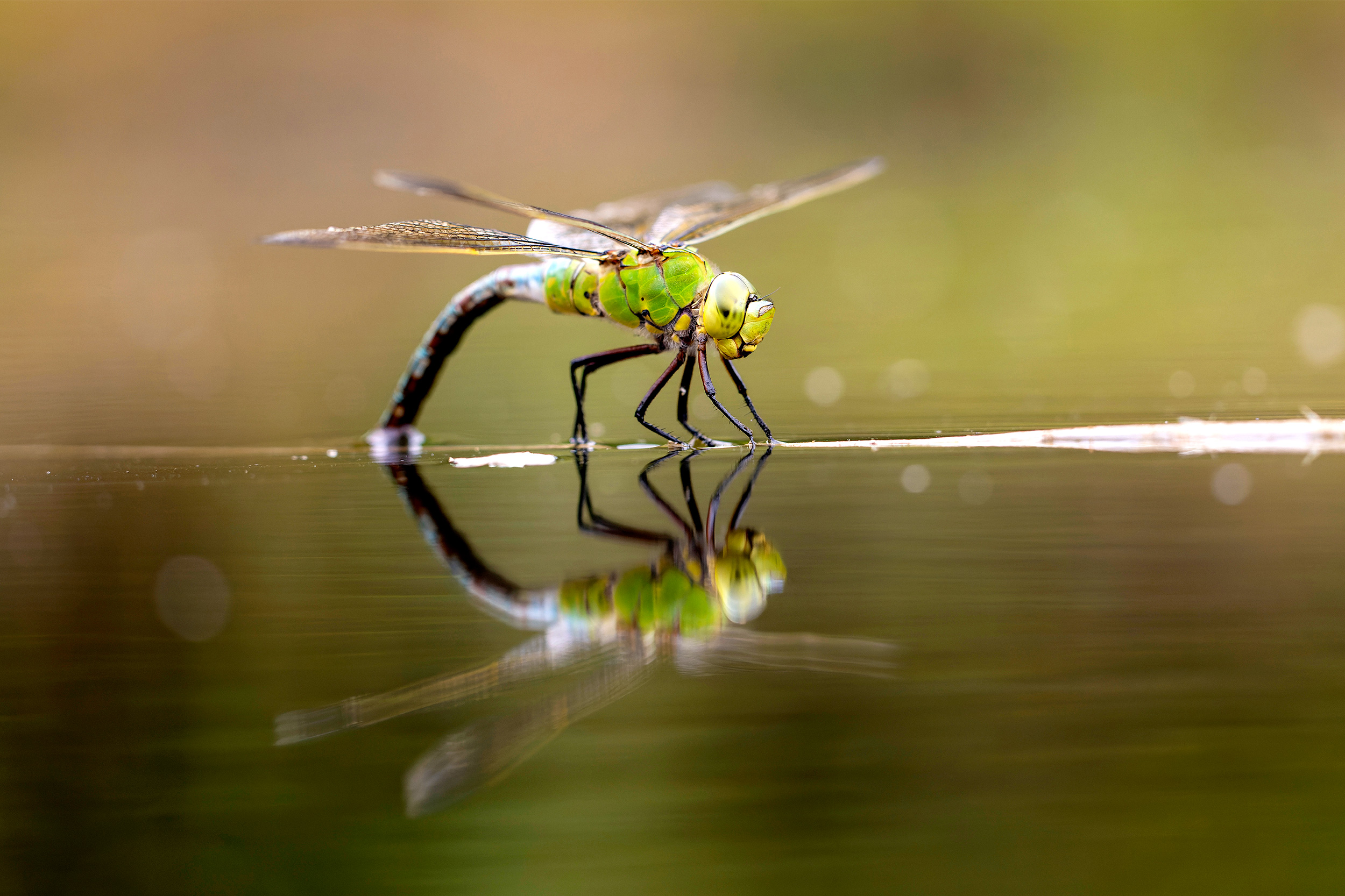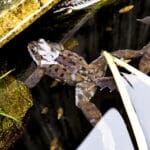Star letter: Gardening alongside nature
David Lindo (Winter/Spring issue) makes a good point about connecting with nature wherever we can find it. One of the highlights of my year is when the damsel- and dragonflies emerge from our pond. As they pair up, they often rest on me, which gives me an excuse to take a break from gardening and watch the wildlife all around me.
Often the pairings of these insects bring the frogs up to the surface where they hide behind the pond vegetation in hopes of catching a quick meal.
Then there are the many solitary bees who have made a ‘street’ of nests in my raised strawberry patch. This has led me to being extra cautious about watering my plants. It seems to have worked because the bees return each year, and as a result my strawberries have never been better.
I have gardened for years with wildlife in mind, practised no-dig methods (without realising it was a thing) and crammed flowers and edibles together. In return, I have a balance, with some sacrificial plants given to slugs and snails. This brings in the birds and Hedgehogs which, as well as providing us with some wonderful wildlife encounters, also results in some tasty food for my family.
Angela Keeler
Nature’s bounty
The apple tree in our garden in Derbyshire attracts many varieties of bird from the surrounding farmland, and I have an excellent view from my bedroom window. Each morning during September and October, two Green Woodpeckers were regular visitors to the tree – not to eat the apples, it seems, so possibly for insects. It was my morning delight before breakfast, watching these colourful birds seeking out theirs. We saw them searching the gravel for ants.
In November, the Blackbirds arrive to devour the apples still plentiful on the tree. One morning, they were flustered when two Redwings arrived on their way from Scandinavia. The Redwings stopped over and took their fill of the apples before continuing on their journey.
Another morning, I was startled when a beautiful Jay landed on the tree, but the Blackbirds didn’t seem to mind, even when it followed them to the wildlife pool and joined in with the splashing.
We are so lucky here to see so many varieties of tit and finch, and we have resident Wrens, Dunnocks and Robins, as well as the larger species of our feathered friends, the Woodpigeons, Jackdaws and beautiful but bossy Magpies.
My daughter and I were bemoaning the fact that thrushes are rarely seen or heard these days when a Song Thrush came hopping along our terrace as if to say, “hey, some of us are still here”.
Madeline Truman
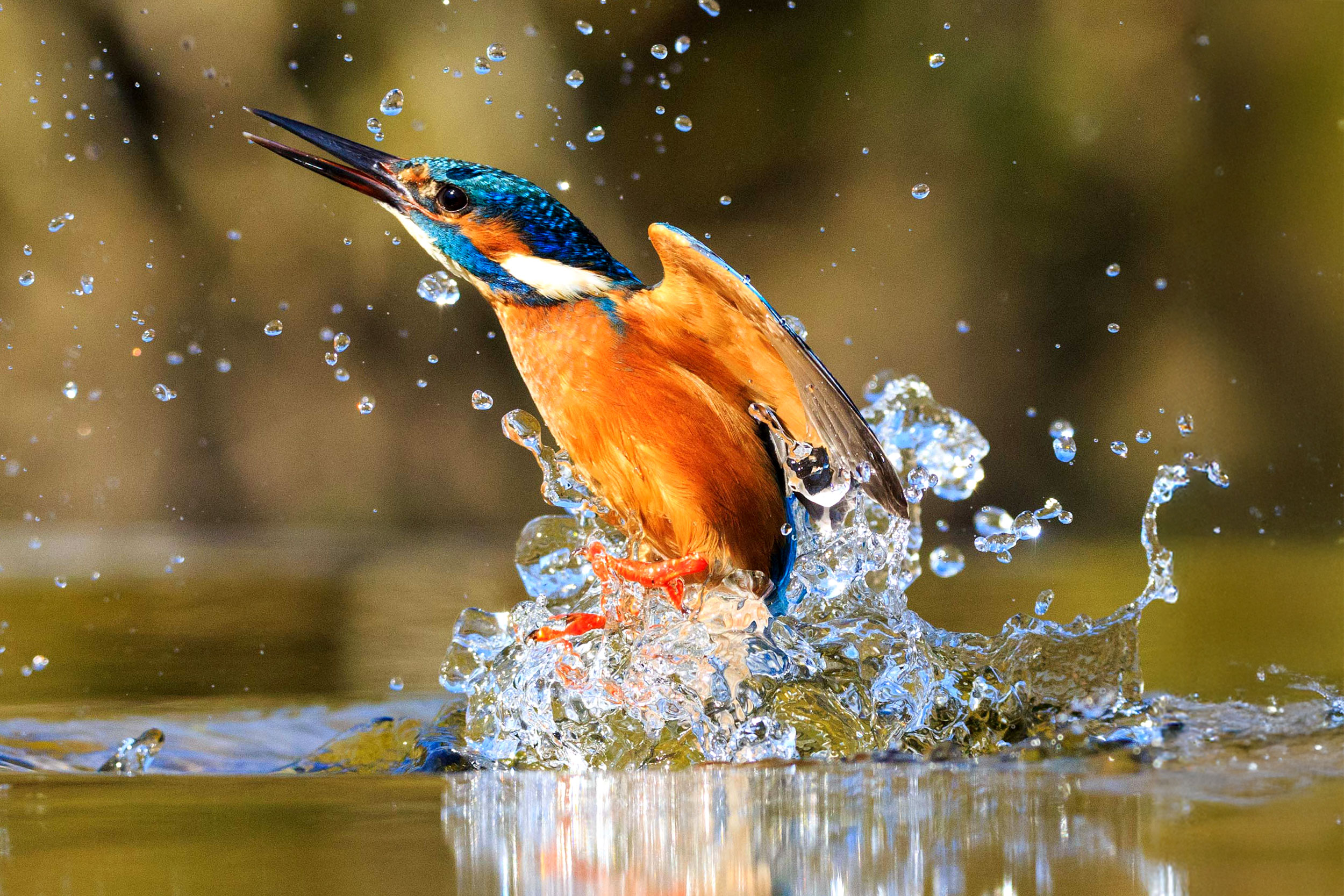
Kingfisher. Photo: Lorna Hayton (Getty Images)
Hummingbirds in Dorset?
Kestrels hover; Buzzards into a head wind can hover; some terns kind of hover just as they spot food; but then my list of hovering birds comes to an end. But there we were, three of us, watching a brightly coloured bird with a bit of a bill hovering on Stanpit Marsh, Dorset.
We have 100 years of birdwatching between us and none of us had seen a ‘hummingbird’ in Dorset! But, of course, it wasn’t a hummingbird. Stanpit Marsh has few trees, so the Kingfisher – for that was our bird – was hovering and then diving into the creeks on the marsh.
Find out how Kingfishers hunt.
This wasn’t an occasional hover – the bird kept doing this for a 15-minute period, at a couple of minutes per hover. None of us had ever seen this behaviour before, and the more we watched the more we questioned how the bird could sustain this for such long periods.
It must have been burning off many calories to be able to do this. To say we were transfixed was an understatement, and we all had a good view on a bright day. It finally made its catch, and the memory of the Dorset ‘hummingbird’ will stay with us.
Tom Perrett
Late breeding
I have been seeing evidence of very late breeding. Is that unusual?
I live in Coventry and walk most days along parts of the Sowe Valley Way. During August 2024, I saw a number of broken eggshells – signs of new chicks.
Then, I observed a number of juveniles as follows: 24 August: juvenile Grey Wagtail; 3 September: juvenile Sparrowhawks; 9 September: juvenile Chiffchaff; 12 September: juvenile Blackbird; 13 September: juvenile Goldfinches.
I also saw a Brimstone butterfly on 28 August – I thought it was a spring butterfly! I would be interested to know if this has been repeated in other parts of the country and what consequences there might be.
Ann Hawker
Ed: This is certainly quite late for the bird species that you mention. However, we have checked with one of our experts, who has also seen late juvenile Chiffchaffs, so you’re not the only one! As for Brimstone butterflies, the adults do start appearing in late August, so this is not unusual. These are the ones that will overwinter and breed in early springtime next year.
Spring clean
Last year, an article on cleaning out bird boxes made me feel guilty about not having done it for a year or two. I have five boxes, so they were cleaned as you instructed and I put chopped clean hay in.
Nesting time came and I saw, from my kitchen window, a Blue Tit going into the box, and then out, taking OUT the hay I had put in! I looked under my other boxes, only to find underneath them was littered with clean short hay. My bed-making was obviously not appreciated!
Margaret Martin
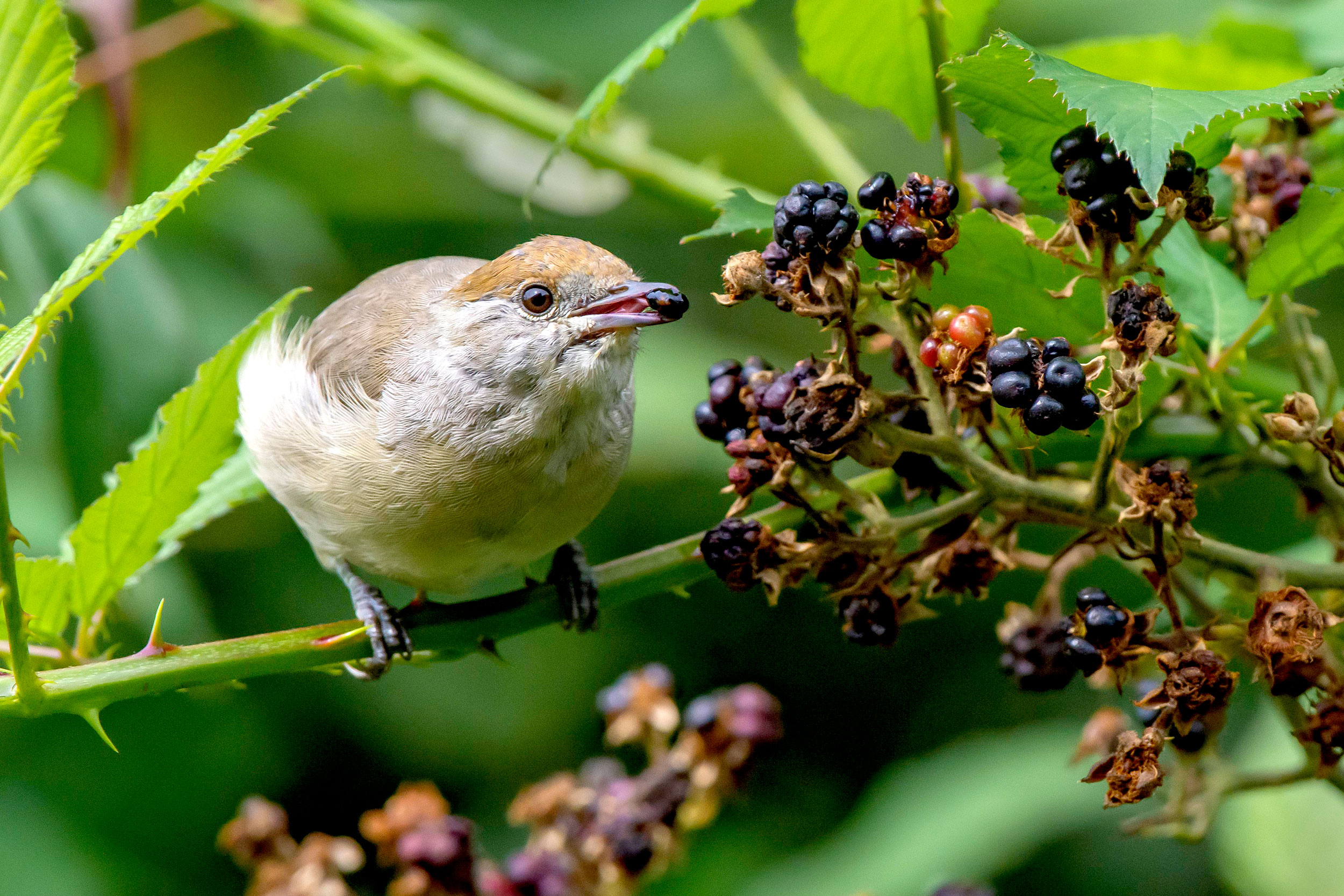
Blackcap eating a blackberry. Photo: Reinhard Hoelzl (Getty Images)
Birds and blackberries
It is stated in the Autumn/Winter magazine (in the article ‘Hoarders and Feasters’) that birds eat blackberries. Do they really? I ask because I have watched them eat many other kinds of fruit – such as cherry, raspberry and redcurrant – but never a blackberry.
When I go blackberrying each year, I have the clear impression that any berries not picked by humans simply go over-ripe and fall to the ground, where they are perhaps eaten by small rodents. I should love to know whether anyone else has actually seen a bird eat a blackberry.
Christine Brown
Ed: Many birds eat blackberries, but the sheer volume (and variety) of these fruits means that there are always many left over.
Hearing loss
Just wanted to say thank you to David Lindo for his article addressing birdsong and hearing loss. I have tinnitus and it affects being able to hear silence in the wild and birdsong.
I find I’m also less able to volunteer. Previously, I’ve volunteered for bat monitoring, but now I worry that I’ll miss a crucial species and bias the results. It was good to hear others are also affected and that perhaps something can be done to help.
I appreciate David’s honesty in talking about his experience. He made me feel less alone in the isolation that can be inherent in experiencing hearing loss.
April Warburton
Birding with a baby
Before my baby’s arrival, I was able to take off on a whim to an RSPB nature reserve. Now, my binoculars have not been out in almost a year. But recently I’ve started paying attention to birds again, albeit in a more localised way.
I tune into the territorial calls of the Robins on our road while walking with my baby or look out the window when a flock of parakeets fly by. Seeing a Kestrel up close at our allotment felt like a gift.
Birdwatching as a new mother may not necessarily be as carefree, but it is no less wondrous.
Davina Levy
Magazine collections
I have all of the RSPB’s magazines from Birds volume 1 number 5 (September–October 1966) through to the current issue. Does anyone have the first four parts so I can create a full set?
John Summerscales
Ed: If you can help John, please email rspbmagazine@rspb.org.uk or write to us at The RSPB Magazine, The Lodge, Sandy, Bedfordshire SG19 2DL

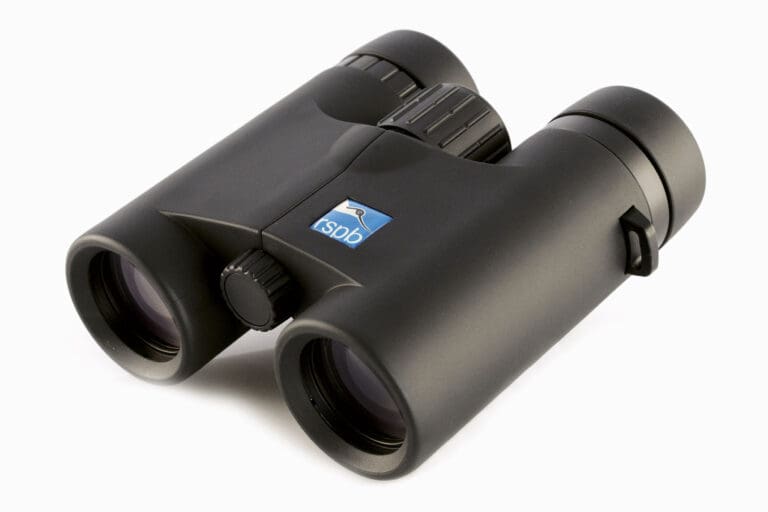
RSPB 8×32 Avocet binoculars. Photo: RSPBshop.co.uk
You might also like
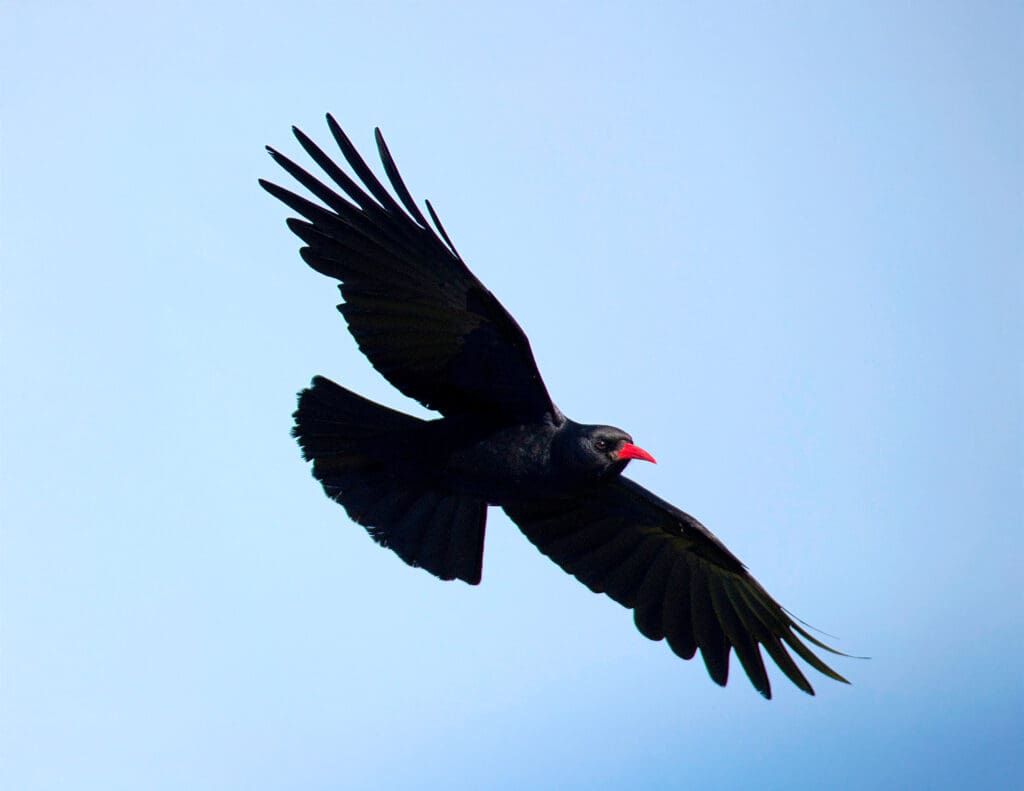
Can you tell which corvid is which?
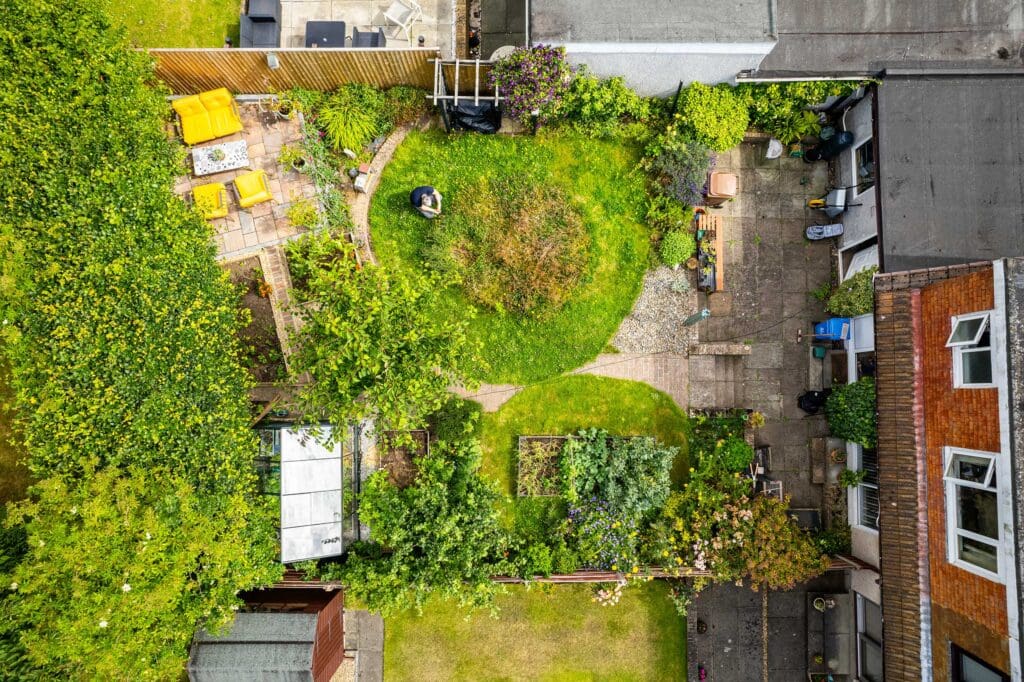
Wildlife gardening: keeping it simple


